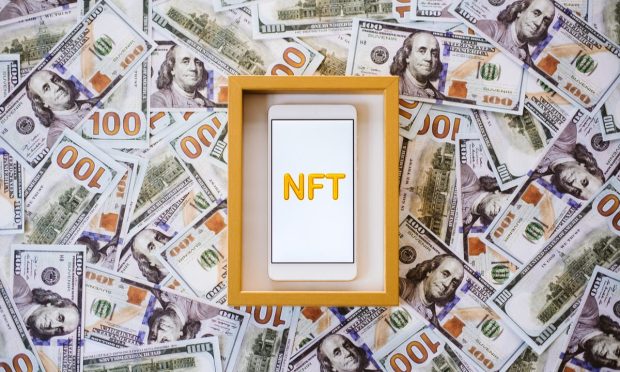What 1st Dibs Sees In NFTs and Why Digital Art Curators Are The Next Big Thing

Art and design eCommerce marketplace 1st Dibs is hitching a ride on the wave of digital transformation in the world of art, launching a new, highly-curated NFT marketplace. The company says that by hopping on this hot new trend, it can attract an entirely new subset of buyers to its marketplace that sells “the most beautiful things on Earth.”
To be sure, NFTs are drawing huge attention right now as collectors and speculators alike throw thousands — if not millions — of dollars at an array of digital artwork, memes and GIFs. Nowhere was this NFT frenzy more notable than in March when the artist known as “Beeple” sold a digital collage called “Everydays: The First 5000 Days” for $69 million — a sum that marked the third-highest price ever paid for a work of art by a living artist.
More recently, credit card giant Visa not only caused a commotion when it paid $150,000 for a pixel art image called “CryptoPunk 7610,” but its sheer presence at an auction gave the NFT marketplace an immediate boost of credibility — 90 CryptoPunks were sold within an hour of the announcement of Visa’s purchase.
You might like: Visa Jumps From Payment Rails To A Ride On The Red Hot NFT Train
While some may struggle to grasp the idea of paying huge sums of money for something that’s impossible to physically touch or hold, 1st Dibs believes digital is where the artistic space is headed.
From Canvas to Crypto
“Digital art is really a natural expansion of what we’ve been offering,” said 1st Dibs Chief Revenue Officer Sarah Liebel in an interview with PYMNTS’ Karen Webster. “But the way we’re approaching it is very different from other platforms.”
Liebel explained NFTs are so nascent that there’s a “huge white space” in terms of curation, community building and storytelling for digital artists in existing marketplaces.
“We’re focused on curation, doing it with both in-house teams and others,” she said. “We’ve hired teams in-house with expertise from the digital art and from the crypto communities, and we’ve also been doing group exhibitions that are curated by artists themselves and putting them on a pedestal to tell the story of the other artists.”
1st Dibs got the idea of expanding into NFTs from its own Vice President of Engineering Tim Whidden, who is himself a digital artist.
“There’s a lot of great art out there and even some collectibles, though on the surface some might appear to be a bit quaint. But there’s a lot of bad art out there too,” Whidden said. “So we wanted to bring branding and curation to the marketplace, hoping that people come to our market because we apply our professional editing to it.” In other words, it’s all about selling high-quality NFT art that has mass appeal.
Read more: The ‘Next Chapter’ In Art History? Digital-Only Work Sells For Close To $70 Million
Multimedia’s Moment
One of the ways 1st Dibs ensures this is through the diversity of the exhibitions it hosts. It looks to work specifically with digital artists who have a strong track record of commercial viability, and it takes time to create exhibitions that offer a breadth of different techniques and styles.
“We have an exhibition called Escapism that’s re-imagining the world we live in through the use of AI and other digital machinations,” Liebel said. “We’ll have five different creators. We try to have geographic and gender diversity and a kind of style diversity, we try to bring in video, we try to bring in still images to offer a breadth of options to our consumer base.”
1st Dibs’ NFT marketplace also places a lot of emphasis on transparency, with the reserve prices, or minimum bids, predominantly displayed, and each of the artworks it has sold listed with the final sales price. The system works for artists too, as they can set a minimum bid price. Bidders, in turn, must have the amount in their Ethereum wallets to be able to place a bid. As soon as the bid is placed, the funds go into escrow. Smart contracts do the rest.
“It’s a completely different system from our traditional eCommerce checkout system,” Whidden said. “We’re minting the tokens ourselves using our own smart contracts on the Ethereum main net.”
More like this: The Week In Payments: NFTs Are The Offspring Of Napster, And Point-of-Sale BNPL Is Set To Scale
Whidden said that in general, most buyers of NFTs today are young “digital-natives” who participate in the metaverse. They’re mainly looking to develop their digital identities and that NFT-backed art is a great way for them to do that, he said. People will buy up NFTs and display them on the usual suspects like Facebook, Twitter et al, and also in more focused communities such as OpenSea and Showtime.
“There are a lot of picture profile projects in the NFT world. There are these avatar projects where people buy their crypto punks and they use those as profile pics on Twitter,” he explained. “And that becomes how they’re known, and later they get really attached to these things. Their digital identities are just as important as their physical identity in the real world.”
Liebel said the 1st Dibs NFT marketplace has gotten off to a good start, and that most of its buyers are new to the site, mainly crypto enthusiasts. It’s hoped by 1st Dibs the NFTs will help tempt that clientele, many of whom have lots of money to spend, to explore the rest of its offerings and perhaps end up spending more on a designer watch or a fancy item of jewelry while they’re there.
Besides attracting more customers to 1st Dibs, Liebel believes the concept of NFTs as a whole will be embraced by more traditional art enthusiasts, too. She told Webster that 1st Dibs has seen a rapidly growing volume in digital art and that it’s doing a lot of promotion and education through its social media channels that has led to new buyers coming into the space for the first time.
“Over time we see it becoming an extension of art, whether that be on your laptop, your phone or on a digital wall that you can transition on a rotating basis,” she said. “We want to be there to help artists transition to this market as it moves toward mass adoption.”
